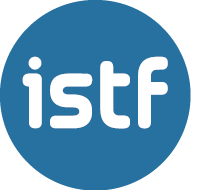Making Sense of Technology in the Classroom
ISTF, June 28th, 2023
Recently, voices have been raised in criticism of the use of digital devices in classrooms, and sometimes with a tone that is too catastrophic. While it is necessary to be critical of the introduction of technology in classrooms, we cannot deny the potential of technology in education nor overlook the obligation of schools to model and promote the good use of a technology that, in the end, is an integral part of our students’ environment. Over the last few years, education centers have gone to great lengths to integrate technology and take advantage of its full potential, both in terms of infrastructure and teacher training.

Without any doubt, and in line with the critical voices raised, the use of technology in schools must be properly planned and focused on those tools that really provide added value at each educational stage. It does not make sense to use technology in activities that can be completed without using it, nor to use it frequently at all educational levels, where the learning objectives and abilities of the students are different.
In this sense, it is essential to pay attention to the specific characteristics of the technological tools that we have at our disposal. Research consistently shows that the benefits of using educational technology, compared to “non-technological” alternatives, depend on the specific details of the tools used. It should therefore be noted that not all educational technology is of the necessary quality to add value to the teaching and learning processes.
One of the most paradigmatic cases is that of the digital content created to substitute textbooks. Most digital educational materials offered in schools today do not have the properties that would make them a much more profitable tool than a textbook. Basically, the contents are often just a digital version of the textbook, with some links and a few audiovisual resources to sell them as digital content. When it comes to these kinds of materials, it is certainly better to stick with the paper version.
Educational research indicates that digital content has much more didactic power than paper. Of course, this only happens when the digital program in place really takes full advantage of the opportunities of the digital environment. That is, when the digital materials:
- have a great wealth of multimedia that goes beyond the images and texts that paper can support: several quality videos and animations that make it easy to understand concepts and processes through their visualization, or that help to introduce contexts and learning situations in a more exciting way than other formats.
- include interactive tools, such as simulators or interactive games, which allow students to experiment, investigate and learn in an active way, even simulating real situations that would otherwise be very difficult or impossible to bring to the classroom.
- provide feedback to the student on their achievement, whether corrections or directions on how to approach an activity that was problematic for them. Feedback is one of the most relevant factors in any learning process, and digital tools can significantly complement the feedback that teachers can provide to students actions that are important to learning such as self-assessment.
- provide teachers with comprehensive and accurate information about student activity and achievement, so they can make informed decisions about where to focus their attention, how to intervene or how to adapt the learning sequence (i.e. facilitate formative assessment). With non-technological resources, most of this information (e.g. Who completed the activities? What score did they get? How many attempts did it take them?, etc.) does not reach the teachers and goes unnoticed.
- contribute proposals, contexts and tools for active and cooperative work, in which technology is used as a creative tool or as an instrument for solving problems, as it is for many professionals today.
- allow diversity to be catered for by customizing the teaching sequences and activities aimed at students, as well as the assessment and, where applicable, the grading.
Other advantages of digital educational materials include:
- Access to multiple languages for new students.
- Read-aloud tools for blind students or use of zoom for students with visual impairments.
- Tools such as built-in dictionaries and glossaries that are activated by clicking on the word to be looked up.
In short, when deciding whether it is worth using technology at school and, specifically, when it makes sense to replace conventional textbooks with a digital project and when not, the teaching and management teams must know how to choose the materials that will add value to their educational project because they tick all the right boxes and provide the best results according to research.
References:
-
Lei, J., & Zhao, Y. (2007). Technology uses and student achievement: A longitudinal study. Computers & Education, 49(2), 284-296.
-
Hillmayr, D., Ziernwald, L., Reinhold, F., Hofer, S. I., & Reiss, K. M. (2020). The potential of digital tools to enhance mathematics and science learning in secondary schools: A context-specific meta-analysis. Computers & Education, 153, 103897.
-
Higgins, K., Huscroft-D’Angelo, J., & Crawford, L. (2019). Effects of technology in mathematics on achievement, motivation, and attitude: A meta-analysis. Journal of Educational Computing Research, 57(2), 283-319.
-
Lewin, C., Smith, A., Morris, S., & Craig, E. (2019). Using digital technology to improve learning: Evidence Review. Education Endowment Foundation. https://eric.ed.gov/?id=ED612157
-
Stringer, E., Lewin, C., & Coleman, R. (2019). Using digital technology to improve learning. Guidance report. Education Endowment Foundation. https://educationendowmentfoundation.org.uk/education-evidence/guidance-reports/digital











Leave a Reply